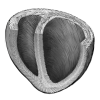Driven by rising obesity, lack of exercise and excessive alcohol use, heart disease has become a major health threat in China. That is propelling a need for more diagnostic tests, new devices to treat cardio problems and drug advances, creating significant new opportunities for Western medical device and pharmaceutical firms. Increases in cardiovascular problems are also spurring the Chinese government to improve channels for innovation. In some cases, Chinese authorities are offering preferential terms for companies addressing cardiovascular disease.
A Threat on the Rise
Over the past three decades with very fast-paced economic growth, the introduction of more Westernized diets, sedentary lifestyles, the persistent popularity of smoking and an aging population have created a perfect storm for the growth of coronary heart disease in China. The prevalence of heart arrhythmia, rheumatic heart disease and congenital heart disease, among other cardiovascular conditions, have worsened even as overall living standards have improved.
A new study published in the Journal of the American Medical Association paints a particularly detailed portrait of the problem. It found that between 1990 and 2016, the proportion of Chinese living with heart disease grew by 15%. In 1980, less than 8% of the population had been diagnosed with high blood pressure, often a precursor to heart disease. Today, its prevalence is just under 40%.
And despite a drop in the same period in the overall death rate from heart disease of more than 29%, the danger continues to rise. There were more than 94 million cases of heart diseases in the country in 2016 alone. And in 2015, cardiovascular disease accounted for 40% of all deaths in the nation of 1.4 billion people.
Another study, by researchers at Yale University and China’s National Center for Cardiovascular Disease, found that one in 10 middle-aged Chinese adults are at high risk for heart disease. But the study found few engage in simple preventative therapies to reduce their risk. Among 1.7 million Chinese in a government funded cardiovascular disease screening project, less than 3% were taking statins or aspirin.
Another factor in the heart disease surge is the growing level of sodium in Chinese diets, according to a 2018 study published in the Journal of the American Heart Association. Researchers found that among adult deaths from cardiovascular ailments in Shandong province, nearly a fifth—twice the global average—may be attributed to high blood pressure caused by diets high in sodium.
The embrace by Chinese of Western-style fast foods and an increased proclivity for soda and red meat is another major factor driving the rise in heart disease. And as more rural Chinese move to cities, obesity continues to tick up. In just one generation, the share of overweight or obese Chinese children increased from 5% to 20%, according to data compiled by Chinese health authorities.
Solutions on the Way: Medtech and Pharmaceutical Developments
Over the past year, medical device manufacturers and drug companies have moved to take advantage of Chinese government encouragement and market conditions.
Last June, California-based Mercator MedSystems, Inc announced a partnership with a prominent Chinese pharmaceutical company Shenzhen Salubris Pharmaceuticals Co. In exchange for $11 million in equity financing, Salubris secured exclusive rights in China to a device developed by Mercator to infuse drugs into an artery or vein. The Bullfrog Micro-Infusion Device includes a catheter-based balloon that uses hydraulics to deploy a tiny needle, tracked by X-ray contrast agents, through the wall of a vessel. The device is designed to allow physicians to deliver drugs or biologics with great precision. Salubris plans to develop its applications in treating peripheral and coronary artery disease, cancer, hypertension and cardiac regeneration.
One month later, Japanese medical device manufacturer Terumo Corp. announced it had acquired Beijing-based Essen Technology Co., Ltd., and would begin selling drug-eluting coronary stents (DES) developed by Essen in China. Terumo has grown rapidly in the Chinese market in recent years, selling guidewires, catheters and other interventional products, but not coronary stents. The company estimates there were more than 750,000 percutaneous coronary intervention cases in China in 2017 and says that number is growing by more than 10% each year.
In November, Shanghai-based medical device company MicroPort Scientific paid $190 million to LivaNova of London for its cardiac rhythm management business. The franchise makes high-voltage defibrillators, cardiac resynchronization therapy devices and low-voltage pacemakers, all in high demand in China.
Also in November, St. Paul, Minn.-based Cardiovascular Systems launched its coronary orbital atherectomy system, the Diamondback 360, in China after teaming up with a Hong Kong company OrbusNeich to distribute the device in China. The device helps ease angioplasty procedures in severely calcified coronary arteries.
China Embracing More Innovation to Combat Heart Disease Threat
With concerns mounting over skyrocketing heart disease rates, Chinese authorities are encouraging innovation by local medical device and pharmaceutical companies.
In the past year, the Chinese government has introduced preferential policies designed to spur innovation. The China Food and Drug Administration (CFDA) is shortening the approval time for medical devices that meet certain criteria. It has granted tax relief and offered deals on land and rent to major players in the field.
For example, Chinese medical device company Hangzhou Venus Med Tech Co. got about $2.6 million in government grants to fund research of its TAVR device. The government of Zhejiang province, where Hangzhou Venus is based, is exempting the company from three years of rent payments and providing another $2.9 million in research funds. That comes on top of a 2016 infusion of $1.25 to the Interventional Valve Research Institute, owned by the same company.
Market Outlook Encouraging
The epidemic of cardiovascular disease in China shows no signs of abating. Preventative measures to minimize a public health disaster, combined with the introduction of new technologies, offer China the only way out. But increasingly friendly government policies to address the problem should mean significant opportunities for Western medical device manufacturers and pharmaceutical firms.







